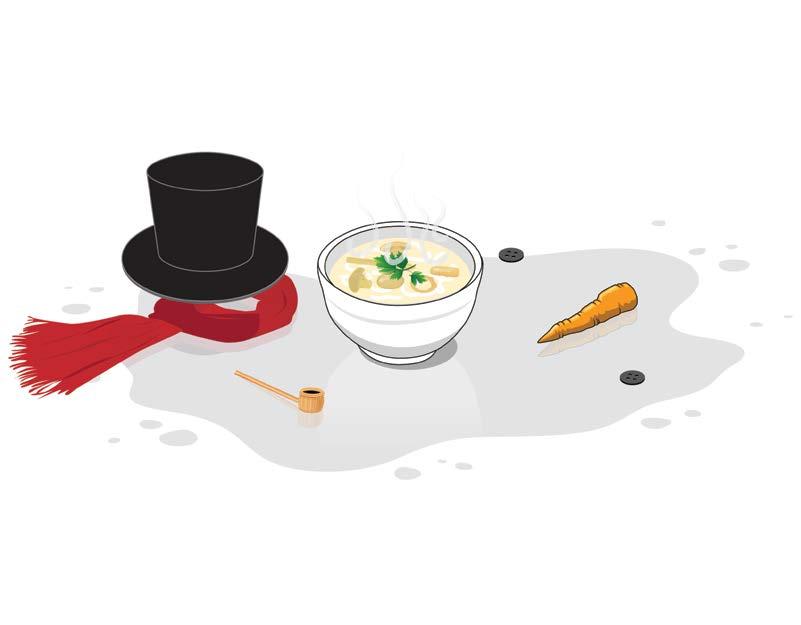
10 minute read
DENVER DRAG’S LONG AND STORIED HISTORY
by David Duffield, History Coordinator, The Colorado LGBTQ History Project, The Center on Colfax Photos and images provided by David Duffield



Drag is about people. In Denver’s case, drag appeared almost as early as when the city was founded in 1859. During the Civil War and Gilded Age (1861-1877) there were few people in the Western U.S., and the ratio of men to women was nearly seven-to-one until 1900.
Susan K. Johnson noted in her book Roaring Camp that miners in the California gold rush would crossdress for fun, and same-gender relationships among them were common. This was also the case in Colorado, and female impersonation was used as a form of entertainment. In one case, Soapy Smith, a famous swindler and leader in early Denver, entertained at the “Great St. Leon” at the Palace Theater during the 1880s. Unfortunately, at the time, female impersonation was often paired with performative blackface. Still other cases note “male impersonators” in burlesque shows. According to Lisa Duggan in Sapphic Slashers, Annie Hindle, a popular, late19th-century, male impersonator, came through Denver around 1870. Hindle later married her partner, Annie Ryan, in 1886 in Grand Rapids, Michigan. In 1891, when Joe Gilligan was reportedly busted for passing bad checks, newspapers reported police finding dresses in his closet. They also found correspondence between another female impersonator friend in Pueblo who committed suicide. Other cases note Southern “negro minstrels” who had female impersonators in their all-male troops. Drag certainly had a presence on Denver stages and a regional presence in Colorado, and it wasn’t even an all-white presence, despite the problematic nature of some entertainers.

As the 19th century ended, anticrossdressing, or “masquerade laws,” emerged across the U.S. which regulated gender presentation in public. Crossdressers themselves, according to historian Peter Boag in Redressing America’s Frontier Past, were viewed more as criminals than citizens.

Still, female impersonation thrived in Chicago and New York at circuits like Vaudeville as part of the so-called Pansy Craze for queer theater. Julianå Eltinge was one of the most popular female impersonators during the early 20th century. Between 1905 and 1926, Eltinge played theaters like the Orpheum and Empress along Denver’s “Electric Mile” near 16th and Curtis.



During WWII, female impersonators performed at Buckley Airforce Base, while bars like Mary’s Tavern were blacklisted for being queer spaces. During the 1950s, there was a crackdown on vice nationwide, and anti-cross-dressing laws were updated. In an effort to target men who crossdressed, drag was effectively outlawed in Denver in 1954.

In the late 1950s, the longest-lasting drag troupe in history, the Jewel Box Revue, came through town on several extended stays. Stormie De Levarie was a member of the Revue as well as a notable drag king who is remembered for inciting the Stonewall Riots. Drag, just like all queer life in Denver, was effectively closeted in the 1960s, yet seeds of resistance abounded.
In the early 1960s, a drag troupe called The Turnabout Review did Christmas shows in Evergreen led by local performers including Dick Reece. Eventually, they worked out a deal to establish a bar near 13th and Lawrence in the Auraria neighborhood. Called the Gilded Cage, the bar was decimated a few years later in the flood of 1965 followed by urban renewal. Many of the members of this troupe later went on to form their own crossdresser groups and Tri Ess Sorority in the 1970s. Drag and trans activism was rooted in the same oppression, and seeds of liberation were planted among the same spaces. Just a few years after the Gilded Cage disappeared, LGBTQ bars sprouted up all over downtown Denver, and drag became more popular. The International Court of the Rocky Mountain Empire (ICRME) was founded in 1974, and the anti cross-dressing laws ended that same year in Colorado with the Gay Coalition of Denver. For years after it became legal, drag was still risky. Performers had to follow the three-piece rule which was widely used to arrest people, though technically the rule never existed. The alleged law required performers to wear men's clothing under their women's clothing. During the HIV/AIDS epidemic, many of the founders of the Imperial Court of the Rocky Mountain Empire passed away. Still, drag was at the center of many fundraisers, while Denver’s drag culture flourished with artists like Nina Montaldo, Christi Layne, Tiffany Todd, and Scotti Carlyle. Likewise, leaders like former mayor Wellington Webb and Gov. John Hickenlooper held fundraisers alongside them. Today, we celebrate drag with stories of youth performers, though this practice dates back at least a century to female impersonators who were often only as old as 16 and as young as 10 in the late 19th century. For these young performers, drag offered protection, hope, and community. Then, as well as now, and perhaps always, drag offered a place to belong––a queer, safe space. Even though today we see folks protesting drag shows like Dragutante, drag, and in fact youth drag, is nothing new. When one sees a nationally known performer like Yvie Oddly, one sees a culture that has flourished and grown. When one sees drag stories entwined with Colorado history, one sees a queer culture emerging from a closeted and forgotten past. Drag in Colorado is, and always has been, about people finding their space and each other.








TALKS QUEER MUSIC AND
DENVER WAREHOUSE LIFE
It’s 2020. The world is literally burning, and we’re about to enter World War III. The queers have pretty much decided it’s the last chapter and there’s nothing left to do but break gender rules and dance. That’s why Picture Plane should be your soundtrack to the apocalypse. Picture Plane, also known by his birth name, Travis Egedy, has been making dark, dystopian pop music with elements of everything from metal to underground country for a while now. He was originally making music here in Denver, as part of the collective of artists who lived and played music in warehouses, but has since moved to New York. Still, his heart is very much in the Mile High, and you can hear it in every dark, subversive note he plays. We chatted with Picture Plane about music, darkness, queerness, and the changing landscape in Denver.
How did your sound evolve to become what it is?
Being a part of a community of artists in Denver was really important because we could bounce ideas off each other and just play for each other all the time. My sound came about really organically. I was always into electronic music and a lot of, like, rap and hip-hop and stuff. But, I was also going to, like, crazy noise shows and punk shows and stuff. So, it was this kind of fusion of these electronic beats but with kind of a DIY, noise-punk spirit or something.
by Addison Herron-Wheeler
Photo courtesy of Picture Plane
I wanted to write pop songs but still have it rough and fuzzy around the edges, and noisey. I’ve always been sort of a postmodern artist in that way. It’s like, the influences are all over the place. And I’m gathering and bringing things in from seemingly very different genres. A lot of people wouldn’t put those things together, but that’s what I like to do.
Tell me about the themes of androgyny and post-gender in your work as Picture Plane. How did those come up, and why are they important to discuss?
I think that was a huge influence from Denver on my my art living inside of Rhinoceropolis being around a lot of, like, queer and anarco-punk type kids. Everyone was really expressing themselves, and I found the concept of playing with gender really fascinating. And, during those years, I made an album called Thee Physical that was predominantly about playing with gender. I just found it to be extremely empowering and really radical to be confronting these rigid binaries that to me are totally absurd. I was always concerned with radical freedom, people being free at all costs, and gender is a big part of that, portraying your sex or your gender. I wanted people to be completely open and free and encouraged to be themselves.
How do you feel like that message has evolved or changed?
Well, I’m not making every song about those themes, but it felt really crucial at that time in Denver. I was thinking a lot about the year 2012 also, like leading up to 2012. I was seeing it as this moment of a radical possibility for an expansion of consciousness and evolving to a higher state of being humans. You know, I don’t know if that really happened or not. But, at that time, I was super optimistic. I was wanting just, like, a total revolution, really. And In a sense, what we were doing here in Denver was a revolution; we were living that reality, and people were just so open and free. Everyone was just really encouraged to be themselves. There was a lot of queer optimism, a lot of cool parties, and I just found myself really immersed in the community. It was really inspiring to me.
Do you feel like when Trump got elected, your music got less optimistic or got darker?
There’s always kind of a line of optimism in my artwork, I guess. I don’t want it to be too bleak. I’m not a pessimistic kind of person, even when things are pretty bad, which they are right now. I don’t want to beat people over the head with, like, ‘Oh, this sucks; everything sucks.’ You know? It’s kind of just boring. There needs to be some escape or some sort of release.


























